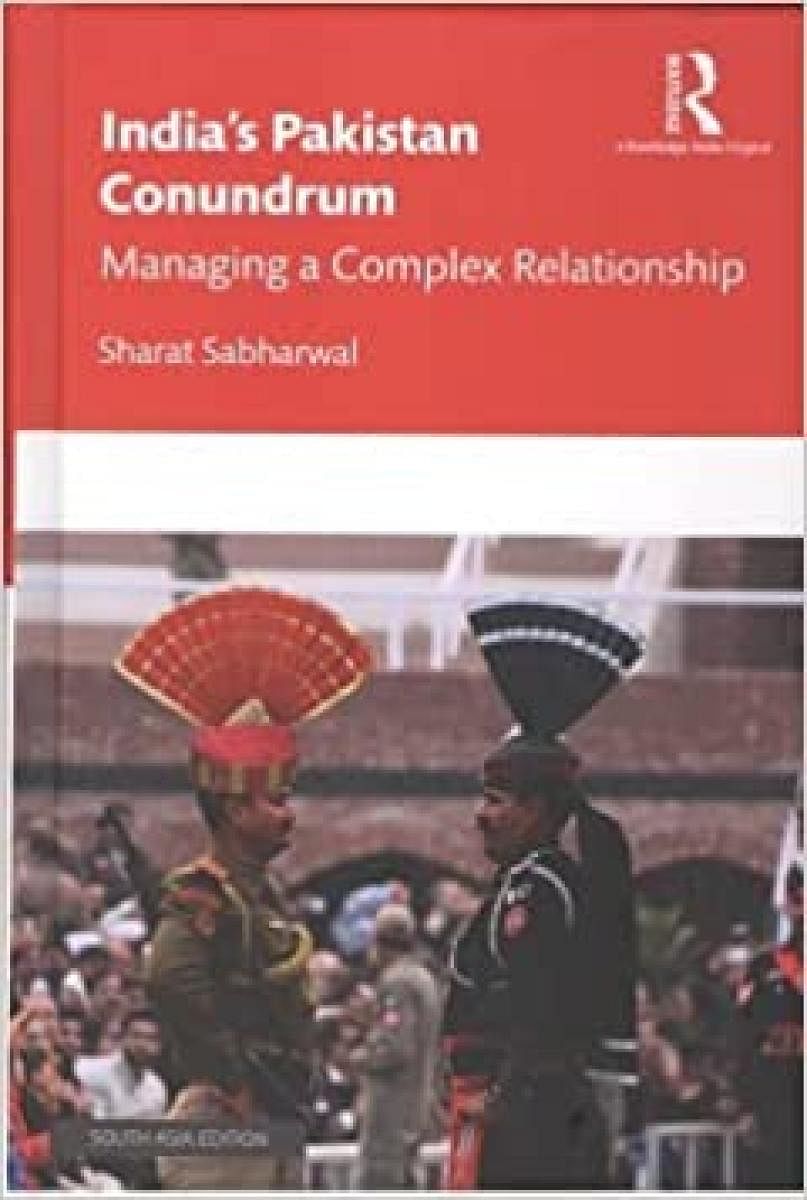
The American politician Madeleine Albright once described Pakistan as causing an “international migraine”. For India, seven and a half decades of military conflicts, terrorism, suspicion and hostility with Pakistan, have inflicted pain on other parts of its anatomy as well.
Sharat Sabharwal quotes Albright in India’s Pakistan Conundrum, which examines the internal dynamics of the Pakistani state, identifying the multiple fault lines in it. He analyses Pakistan’s external relationships and the evolving templates in its use of terrorism as state policy, which has backfired spectacularly by threatening its own stability. He contextualises the vicissitudes of India-Pakistan relations, resulting from the interaction of these parameters with changing Indian attitudes toward its neighbour’s behaviour.
Perennial theme
Pakistan-sponsored terrorism is a perennial theme in the bilateral discourse. There have been lulls, midwifed by backchannel interactions. One commenced in 2004 when Pakistan undertook not to export terrorism to India. This reduced violence in Kashmir and terrorist acts elsewhere. The backchannel interlocutors proceeded to negotiate a bilateral agreement on Kashmir that would not formally change national borders. Neither country officially acknowledged its contents, but Sabharwal has extracted extensive details from open sources. A fresh outbreak of terrorism, including the Mumbai attacks in November 2008, stalled the agreement.
As High Commissioner to Pakistan from April 2009, Sabharwal was involved in the bilateral effort to keep the peace process alive. This meant pressing for an investigation of Pakistani involvement in the Mumbai attacks and bringing the perpetrators to justice. The findings of the Pakistani investigations, shared with India, established that the carnage was planned, financed and executed by Lashkar-e-Taiba. But Pakistan did not prosecute the perpetrators, as cross-border violence escalated. More violence greeted the Modi government’s initial initiatives to resume dialogue, leading to a suspension of bilateral interaction.
Treading a middle line
The author suggests that this complex relationship has to be managed by a combination of blandishment and deterrence, to counter the “security state paradigm” of Pakistan’s military establishment, even while encouraging the constituencies — including business, media, academia and the younger generation — which support normal engagement with India. This means treading a middle line between naïve expectations of reciprocal goodwill and a purely muscular approach.
He enumerates propositions on which policy should be based. Pakistan’s disintegration is not imminent, and fortunately so since it would cause a nightmare for India and the world, particularly because of the nuclear dimension. Its army will not abnegate terror and will continue to dominate the country’s politics and economy, though its influence is gradually waning. Its security state narrative, its record in ensuring stability and its foreign policy perspectives attract increasing domestic criticism. Civil-military relations are deteriorating and divisions within the army are widening. Trade as an instrument of pressure is short-sighted and ineffective. Water as a source of Indian leverage is overrated. The strengthening Pakistan-China nexus means that India should not consider the relationship in purely military terms.
The only solution?
Sabharwal warns that the international isolation of Pakistan has limits. India’s engagement with West Asia has limited Pakistan’s ability to use the Islamic solidarity card. India’s strategic partnerships with the West have, to some extent, restrained Pakistani sponsorship of terrorism. But geography and the politics of the region and religion will prevent the disengagement of the region. As a senior US Navy official told the US Senate in 2019, nuclear Pakistan — “at the nexus of Russian, Chinese, Indian, Iranian and US geopolitical interests” — will always be important for the US. We can safely assume, therefore, that neither the West, West Asia nor China will let Pakistan go the way of Sri Lanka in economic distress.
On a border settlement with Pakistan, Sabharwal opines that accepting the Line of Control (LoC) as the international border is “the only feasible non-military solution”. This view has many adherents, but grates with those who believe that India should not prematurely surrender its claim to territories of strategic importance that it lost in a situation where geopolitics prevailed over legality.
Commercial, tourist and media exchanges have dried up and considering that most analyses of Pakistan are based more on rhetoric and propaganda than data and ground realities, Sabharwal's book comes at an opportune time and is recommended for its well-informed and dispassionate analysis.
The reviewer is a former diplomat and a Distinguished Fellow of the Vivekananda International Foundation.